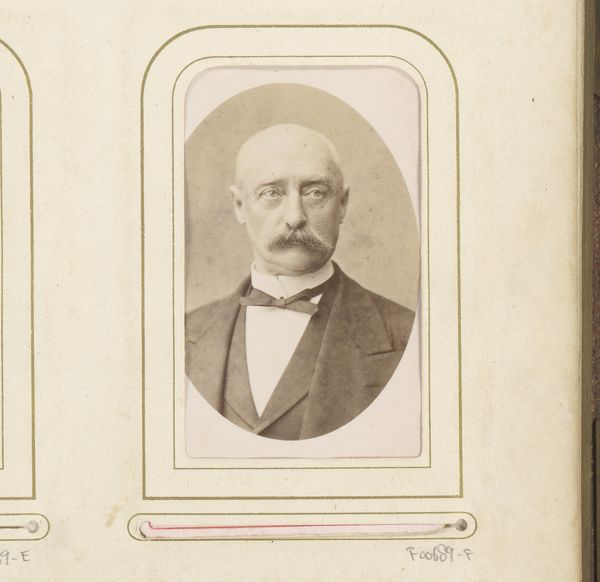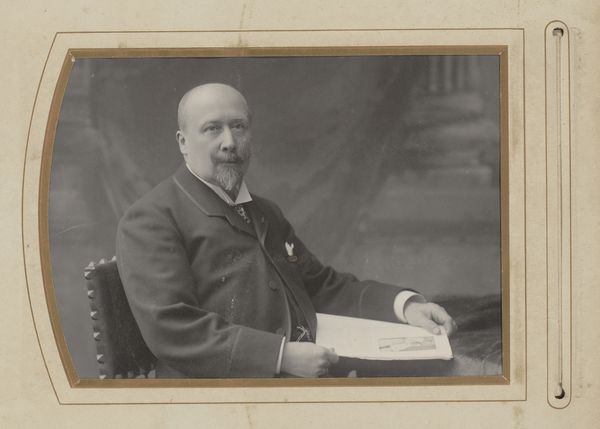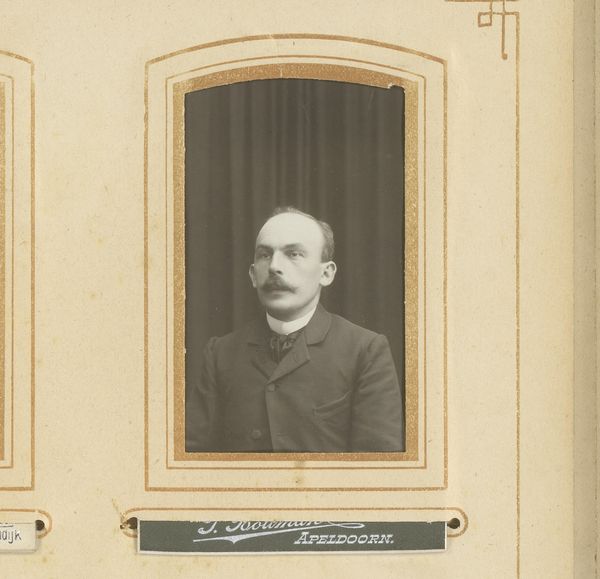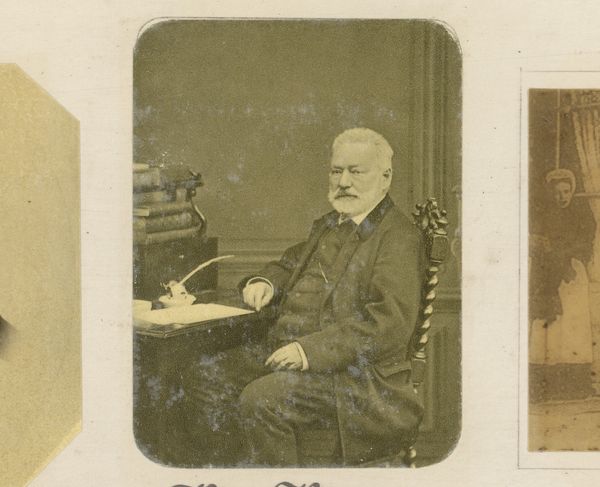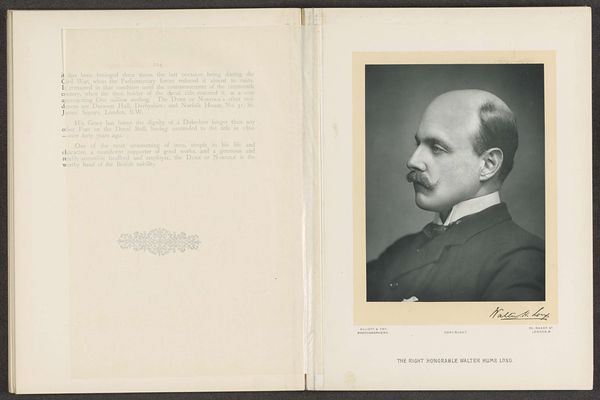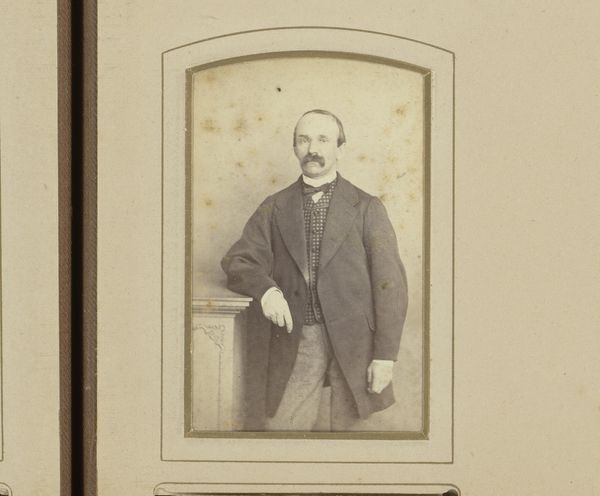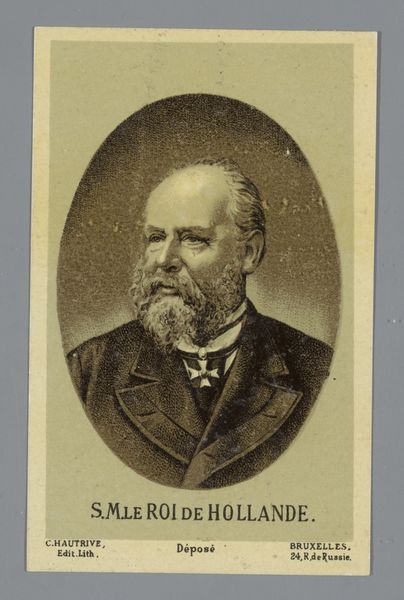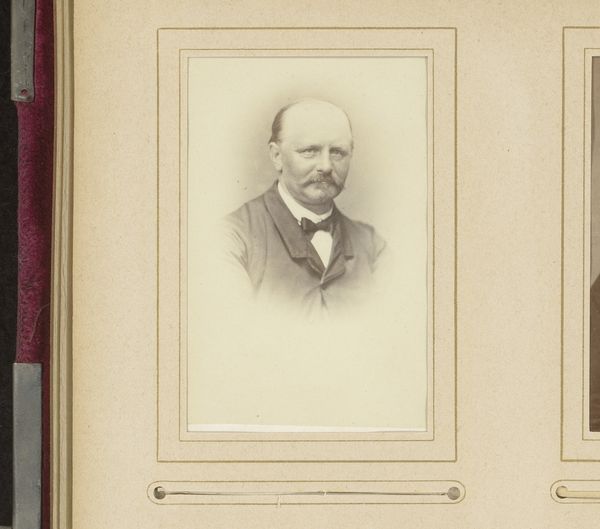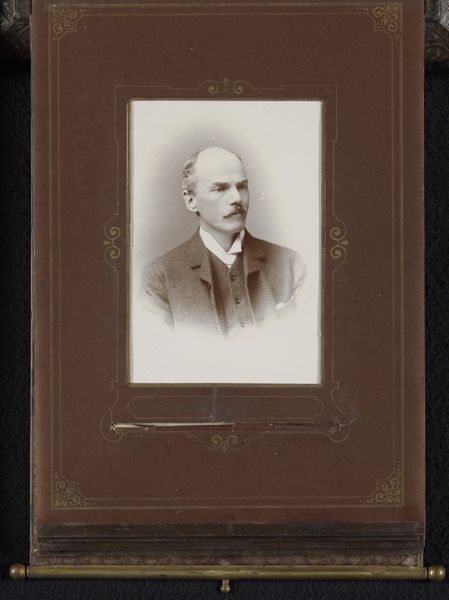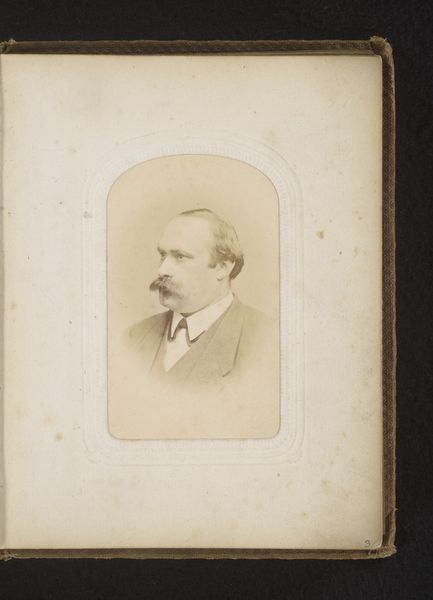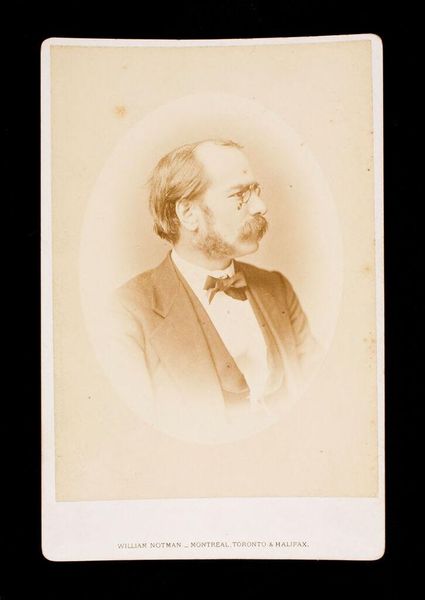
Governor Morehouse, Missouri, from "Governors, Arms, Etc." series (N133-2), issued by Duke Sons & Co. 1885 - 1892
0:00
0:00
drawing, lithograph, print, photography
#
portrait
#
drawing
#
lithograph
# print
#
impressionism
#
caricature
#
caricature
#
photography
Dimensions: Sheet (unfolded): 2 3/4 × 4 5/16 in. (7 × 11 cm) Sheet (folded): 2 3/4 × 1 3/8 in. (7 × 3.5 cm)
Copyright: Public Domain
Curator: What strikes me immediately is the linear compartmentalization, three distinct panels juxtaposed—a kind of visual triptych. The clean lines, balanced composition, and restricted color palette project order. Editor: That's interesting, because to me the compartmentalization feels very much of its time. It's a visual encapsulation of late 19th-century American values: authority, progress, and commerce. This is "Governor Morehouse, Missouri," dating from 1885 to 1892, a lithograph card issued by Duke Sons & Co. as part of their "Governors, Arms, Etc." series to sell cigarettes. Curator: Cigarette cards! That explains the almost naive, declarative quality. Let’s dissect this panel-by-panel. On the left, we see the state's coat of arms. What is most significant there? Editor: The Missouri coat of arms includes two bears, and a Latin motto which translates to, “Let the welfare of the people be the supreme law." But also take note of the horn of plenty, overflowing with fruits. It's a loaded image promising prosperity, inextricably linked here with the state’s identity. Curator: And in the center, Governor Morehouse himself. A very… substantial figure, shall we say. It’s hard not to read this as a visual signifier of strength, a symbol of authority, or perhaps even excess. What about the panel on the right? Editor: It features a waving American flag over what's labeled "Bridge at St. Louis." A symbol of national pride combined with an emblem of engineering and industry. Together with the volume of text here—a celebration of sales figures. It all coalesces into a kind of visual propaganda of turn-of-the-century commercial dominance. Curator: It really underscores the interweaving of patriotism and marketing in that era. Seeing the Duke Cigarettes logo emblazoned across the center panel makes this not only a portrait but also a marketing vehicle. Editor: Exactly. And if we examine this entire card as a symbol, then this object speaks volumes about its cultural moment, both the overt and hidden ambitions of American culture—connecting governance, manufactured needs, and manufactured realities. Curator: Indeed. It's fascinating to unpack how so much is conveyed through what seems at first glance, a simple piece of promotional art. Editor: An aesthetic object and a cultural artifact! Each aspect meticulously placed and symbolic of power.
Comments
No comments
Be the first to comment and join the conversation on the ultimate creative platform.

